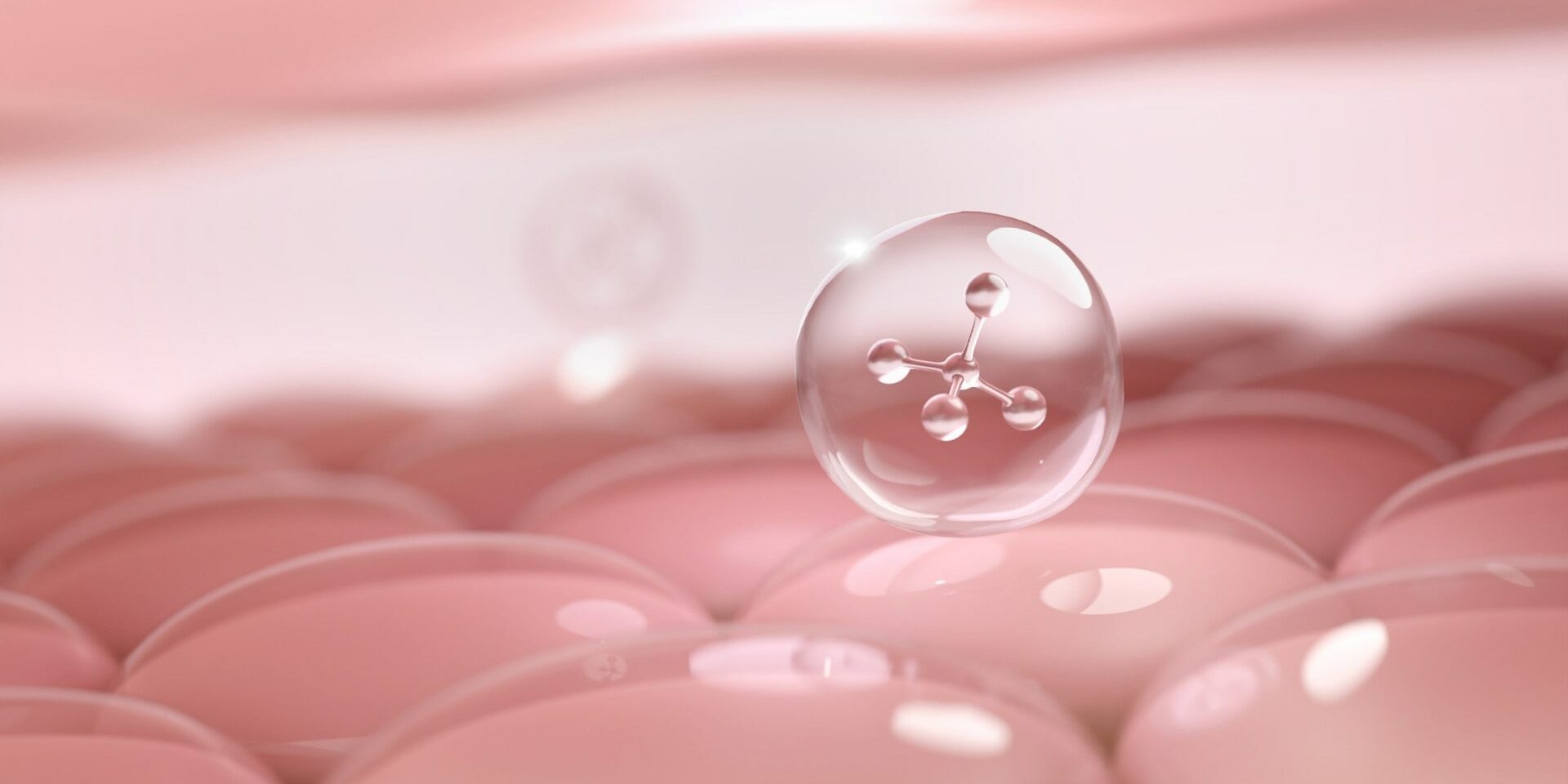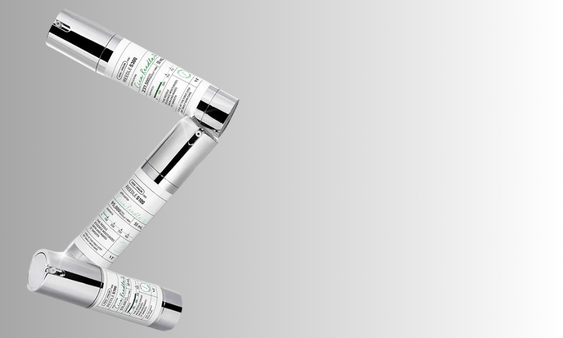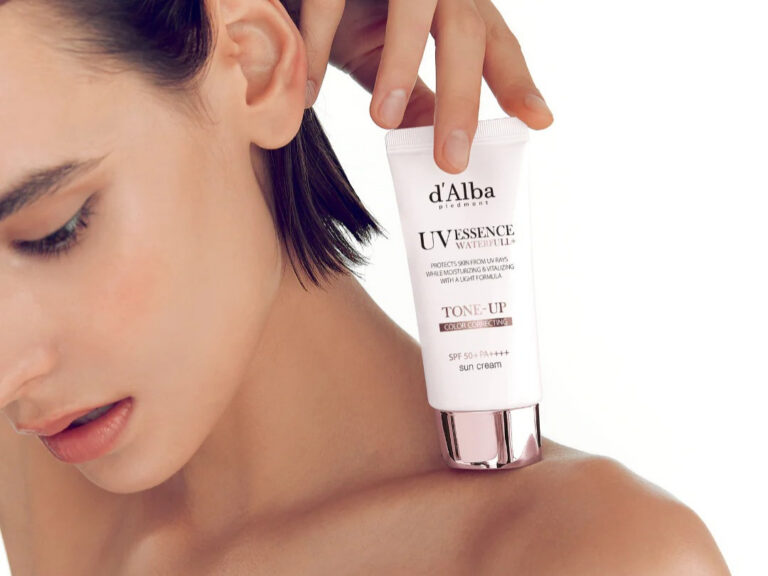Korean cosmetics are not just keeping up with the times – they are already living in the future. Every year, K-beauty surprises us with innovations that the Western market is only just beginning to discover. The year 2025 undoubtedly belongs to PDRN – polydeoxyribonucleotide, which has firmly moved from the field of medicine to everyday skin care.
What is PDRN?
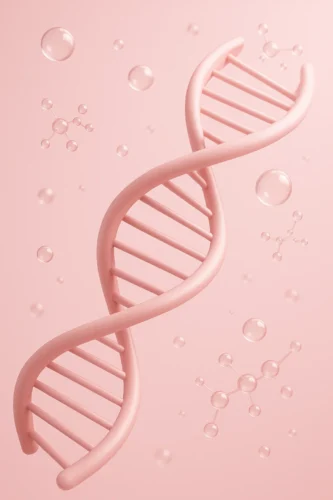
PDRN are short DNA fragments obtained from salmon milk or plant extracts. Their structure is very similar to human DNA, which is why skin cells “understand” them well. Initially, PDRN was used in rehabilitation and injectable cosmetics – to rejuvenate and heal the skin. But now Korean scientists have adapted this ingredient for external use. Today, PDRN is found in tonics, pads, serums and even scalp care products.
How did it all start?
It all started in the labs – first by Italian scientists in the 1980s, then by the Korean pharmaceutical company BR Pharm. They were the first to prove that PDRN accelerates skin healing, stimulates collagen production, and reduces inflammation. And it does so gently – unlike aggressive ingredients like retinol or acids.
Why isn't PDRN just a trend?
PDRN acts at the cellular level: the body perceives these fragments as an “alarm bell” and starts the recovery process. They activate adenosine receptors, trigger the synthesis of collagen and hyaluronic acid, and improve microcirculation. The result is firmer and more elastic skin, even tone, less inflammation and redness.
Studies confirm that PDRN not only rejuvenates, but also protects against UV radiation, fights oxidative stress and strengthens the skin's protective barrier. This makes it an ideal component in anti-aging care, regeneration, acne treatment and prevention of the first signs of aging (from the age of 25-30).
How to recognize PDRN?
In the ingredient list, you may see it as the names Sodium DNA or Hydrolyzed DNAThe lower the molecular weight (below 100 kDa), the better it is absorbed into the skin. Most often, manufacturers add PDRN in concentrations of 0.01–3%.
What impact does PDRN have?
- Deep Sleep – the skin stays soft and moisturized for longer.
- Rejuvenating effect – reduction of wrinkles and tightening of the facial contour.
- Antioxidant protection – fewer age spots and damage from UV radiation.
- Recovery – ideal after peels, injectable procedures or acne.
- Even complexion – less dull tone and hyperpigmentation.
PDRN is not just another fad. It is a scientifically proven, effective and gentle way to restore, protect and rejuvenate the skin. It is these ingredients that define the face of modern Korean beauty care.
Medicube PDRN Pink — pinkish restorative formula
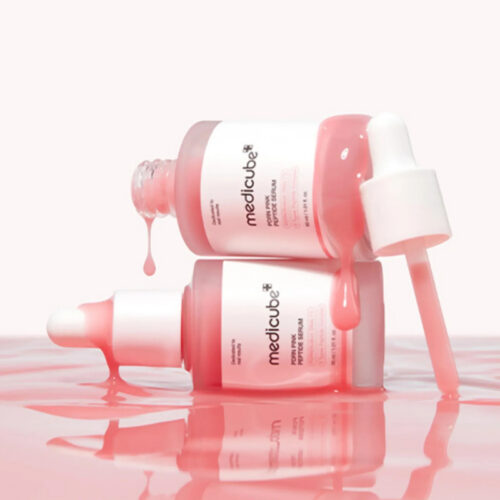
Medicube The patented formula combines PDRN (polydeoxyribonucleotide) and vitamin B12 (cyanocobalamin), which give the products a delicate pinkish hue. This combination is the basis for three main series: PDRN Pink Collagen, PDRN Pink Peptide and PDRN Pink Exosome.
PDRN from salmon milk is concentrated at 1% and acts as a skin renewal trigger — it stimulates the production of new collagen and elastin fibers and helps restore skin damaged by the sun, stress and aging. Its effect is enhanced by vitamin B12, which accelerates cell metabolism and tissue renewal.
When collagen is added to the composition, the skin becomes noticeably moisturized, firm and elastic. The combination of PDRN and peptides provides a strong lifting effect: wrinkles and the depth of expression lines are reduced, while the appearance of new ones is slowed down. PDRN triggers a “disorder” at the cellular level, which causes the body to regenerate, and peptides provide the building blocks for this regeneration.
PDRN Pink Exosome The series stands out for its delivery system. Microchannels created by micro-wounds on the skin help active ingredients reach deep into the epidermis. Vitamin B12 improves microcirculation, and exosomes transmit signals between cells, supporting protein synthesis and skin renewal.
Medipeel Phyto Exosome PDRN — smart anti-aging care for skin 35+
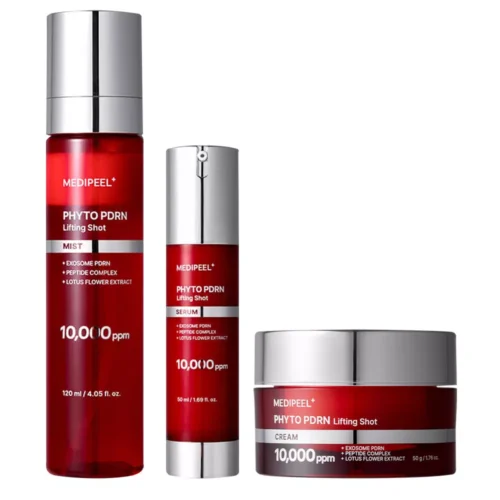
Medipeel The new series combines lotus herbal PDRN, 11 peptides and Vitamin Cto support the needs of mature skin. After the age of 35, the skin's natural processes slow down, but this complex stimulates the production of collagen and elastin.
Vitamin C and signal peptides with antioxidant properties protect collagen from glycation, help restore the extracellular matrix, and improve skin elasticity and structure.
ACE inhibitor peptides They promote microcirculation and reduce swelling, which often accompanies sagging skin. Therefore, the series is perfect for daily care of skin with the first signs of aging.


